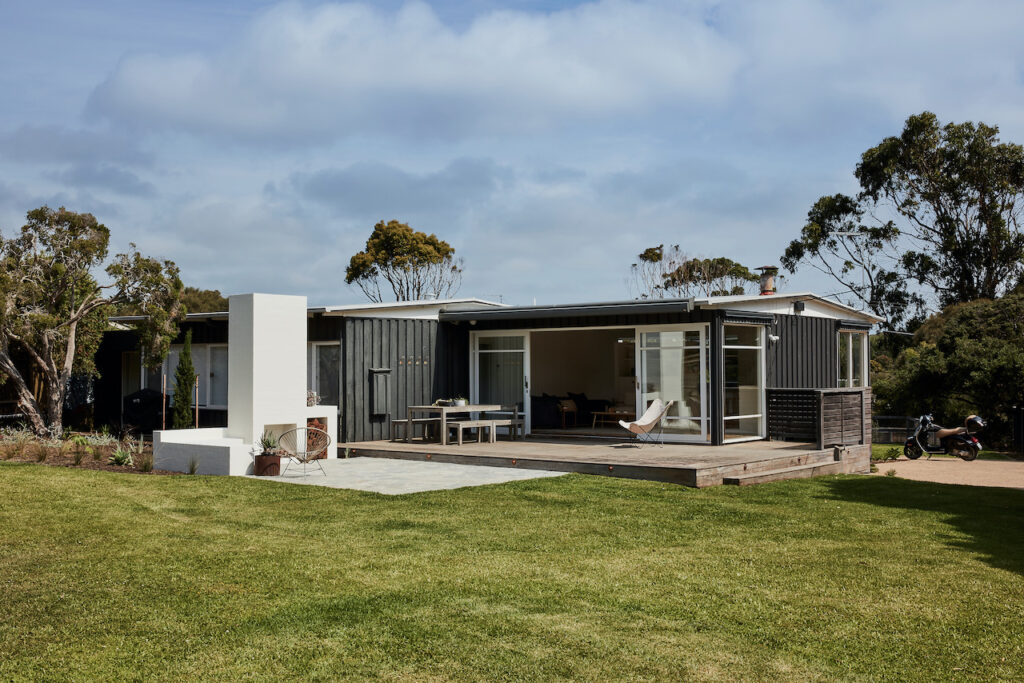
Text by Pipkorn Kilpatrick
The Portsea Beach Shack was a CHI (Consolidated Homes Industries) home designed by Robin Boyd in 1955 and built in 1956.
As with Boyd’s other house plans borne from progressive services like the Small Homes Service from 1947 and CHI from 1955, this charming beach shack had a warm humanity, embodying Boyd’s design principles of restrained materiality and a sympathetic engagement with the natural landscape.
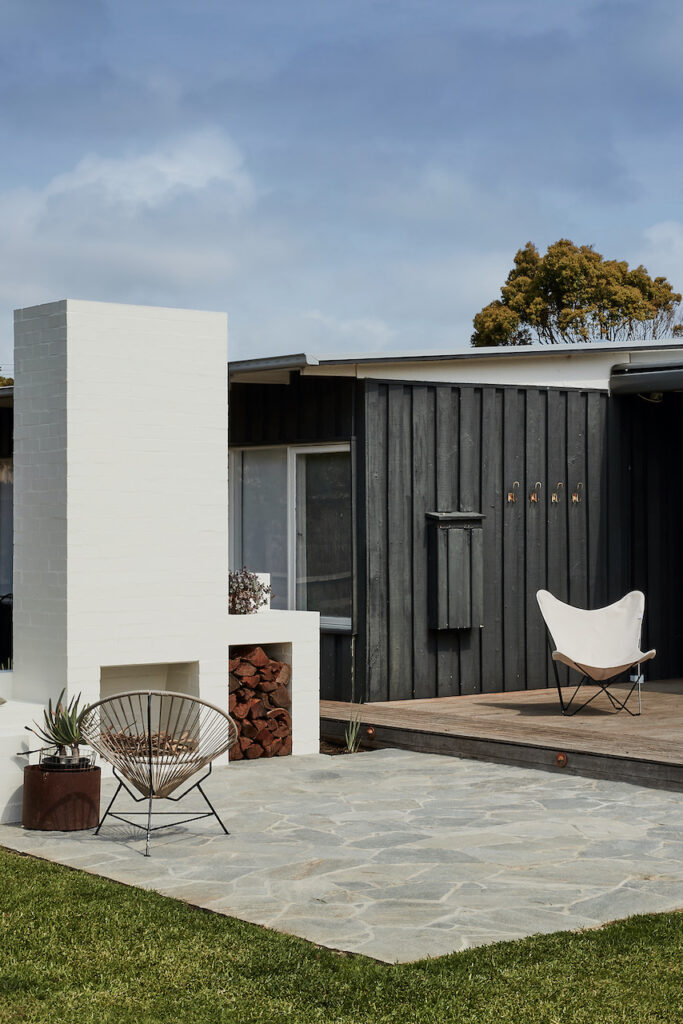
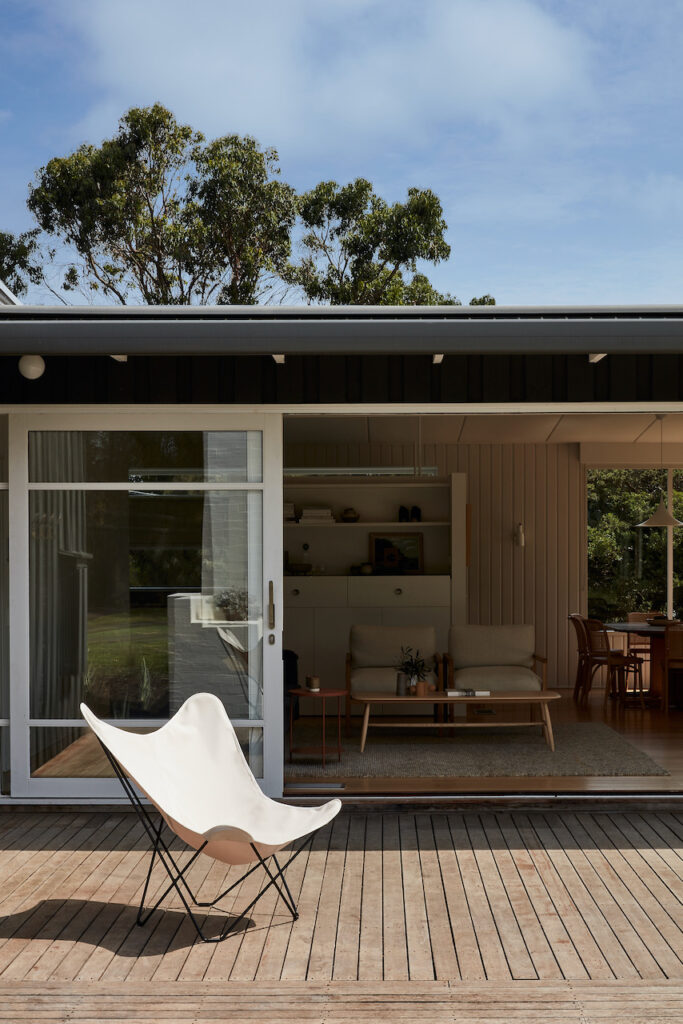
Fortunately, the homeowners had a full appreciation of the modernist charm of the home, with its abundant light and clever detailing.
And the floor plan was for the most part faultless, with the owners already having made the most of the cleverly planned extendability of the design, adding a master bedroom and ensuite onto the sleeping wing.
But the kitchen wasn’t working as a functional area for holiday entertaining. It had been previously renovated, possibly in the early 2000’s, with red cabinetry and uncomplimentary finishes.
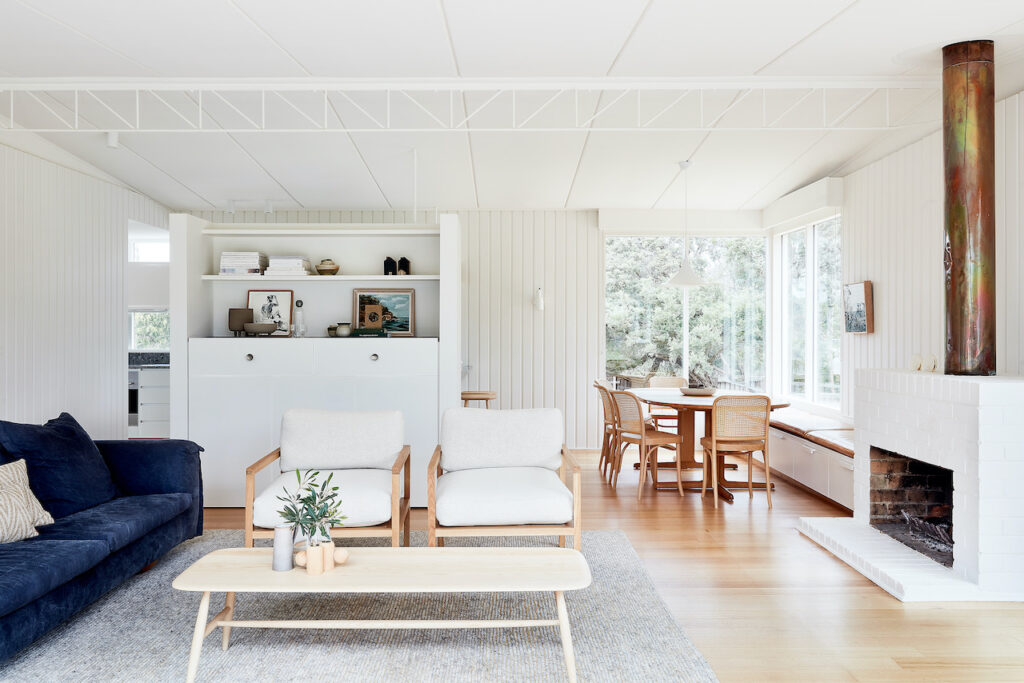
So, when briefed, the approach for Pipkorn Kilpatrick Interior Design had to be one of restraint, where the majority of the house was retained.
They focused on pivotal areas whose reinterpretation would support and embrace the charm and fabric of the existing home. They set out to improve function and connectivity in a way that complemented the existing house without destroying any Boyd design intent.
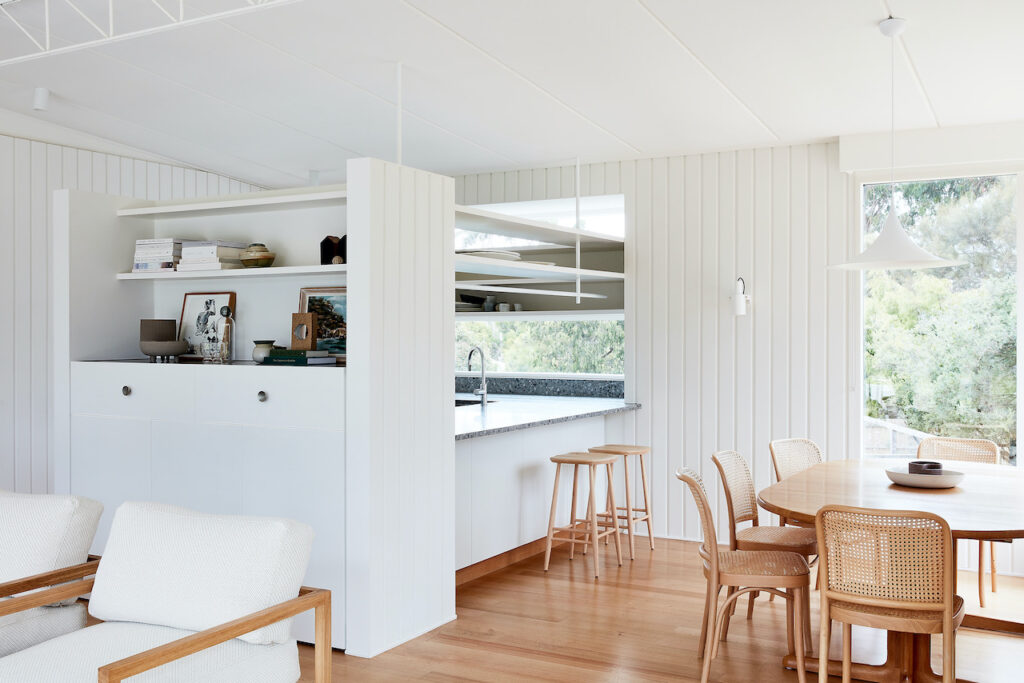
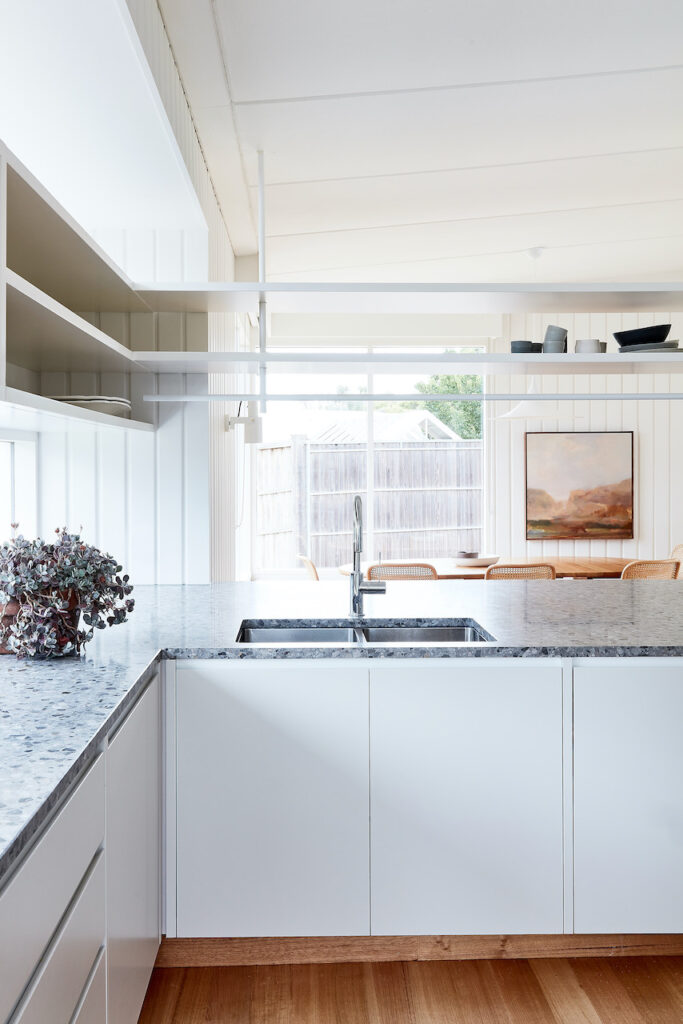
To give the homeowners all they wanted, there was a need to extend the southern aspect slightly. A very minimal extension to the South West and elongation to the South East provided so much in terms of function and connectivity, yet is barely visible from the front façade.
By pushing the footprint out only 700mm to the south-west, the kitchen was made more functional with space, storage and finishes that helped re-establish the beach shack feel and charm and further enhance its engagement with the outdoors.
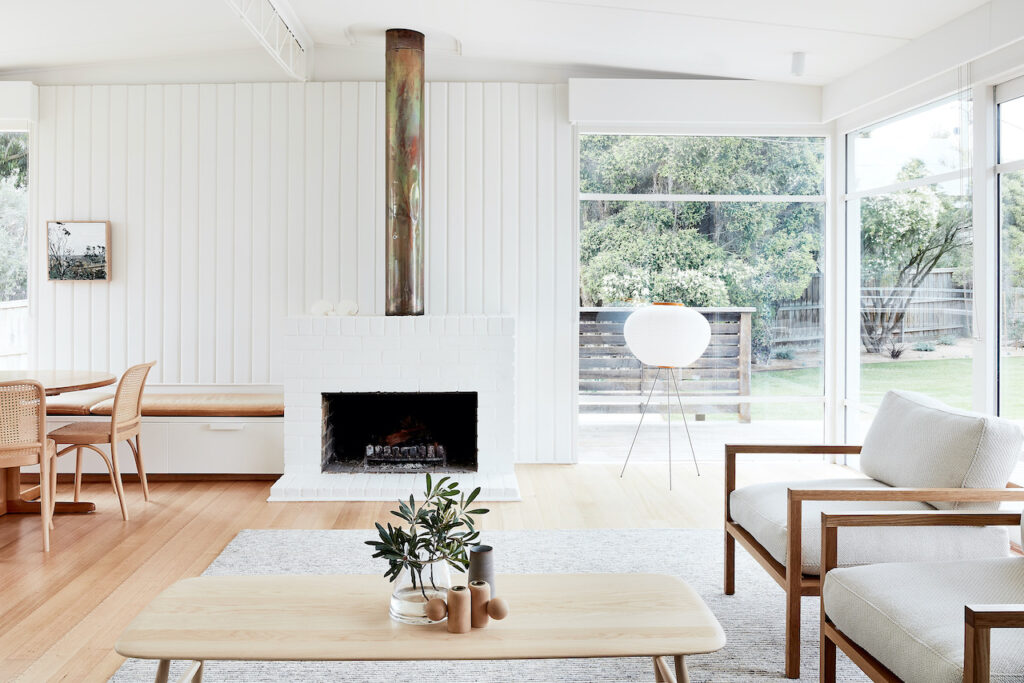
The elongated kitchen windows, spanning the entire length of the south bench on either side of the overhead cabinets, frame the eucalypts above and the garden and pool area below.
The kitchen was also opened up to the dining area to improve entertaining functionality, but suspended shelving and banquette seating reminiscent of Boyd’s designs, was used to maintain character and intimacy.
Laundry and storage areas were reworked; windows and doors in the living areas were replaced to improve thermal capability and to open the living area up to the deck with sliding doors used by Boyd in similar houses of the time.
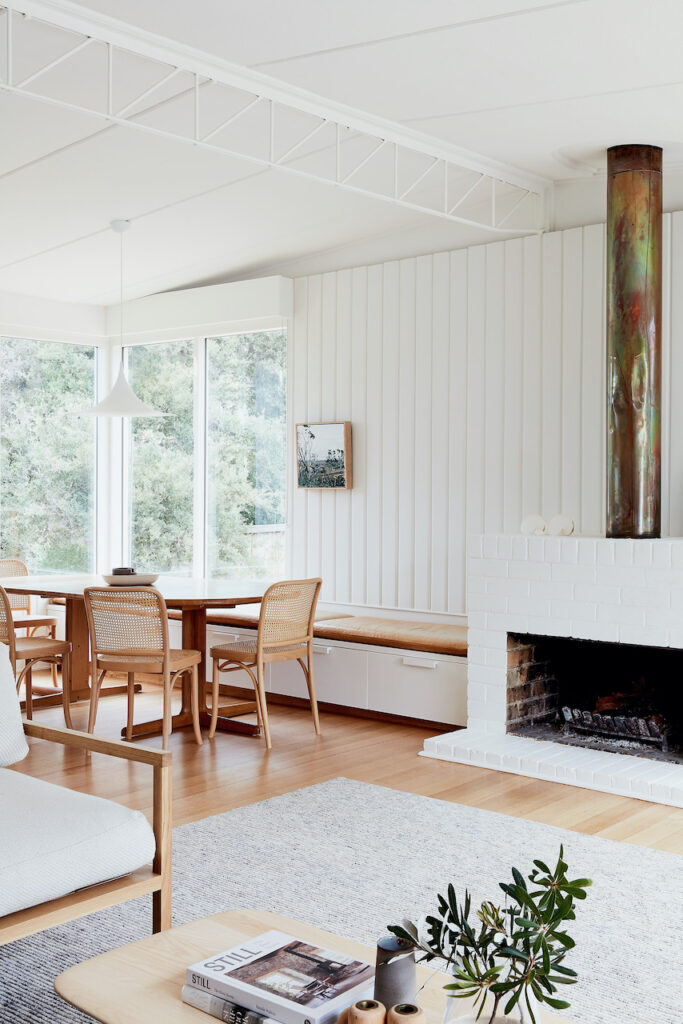
Original cabinetry hardware was reinstated and the 3/4 partitioning separating the kitchen and living areas was used to house a bar area and instil a sense of fun.
Soft belceppo terrazzo and Boyd’s much-loved lining board (the original profile sourced from the local hardware store, still in stock from Boyd’s specification perhaps?!) were used in the new areas to make sure the fresh clean palette of white walls and original Vic Ash flooring retained plenty of personality.
The original fireplace and patinaed copper flu are a stand-out feature in the living area.
The beach shack connects to its history by letting the outdoors and the surrounding landscape remain the focus, borrowing abundant light, garden art and the impression of space from the outdoors.
There’s no cinema room(!) instead there is an expansive lawn, garden and bbq area that beckons to be used and enjoyed. This was, and still is, a truly special home.
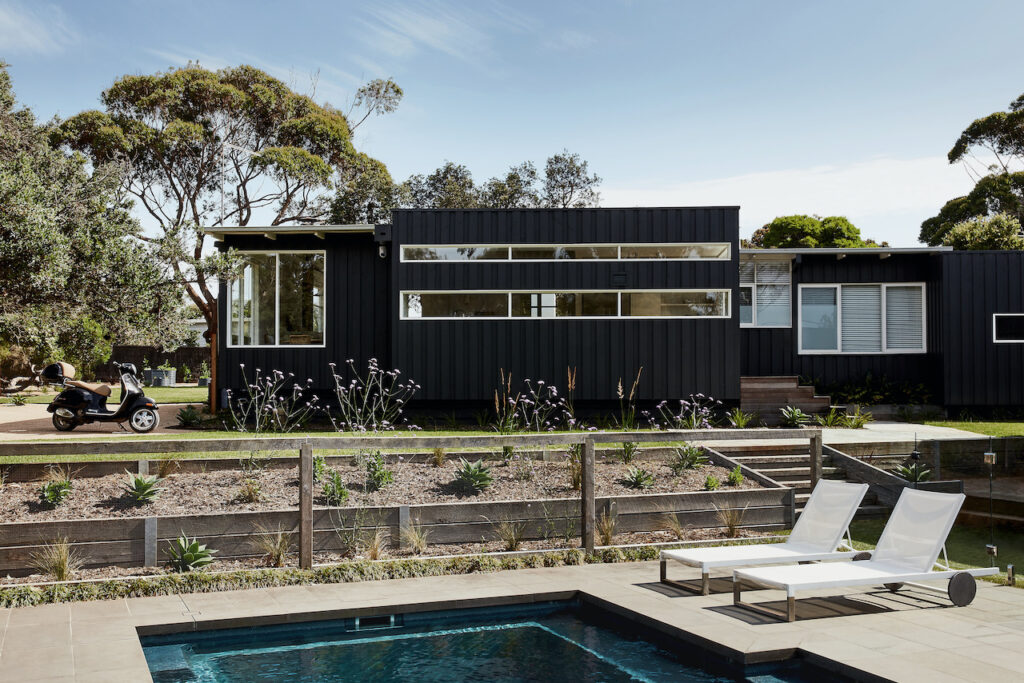
Photos by Chris McConville